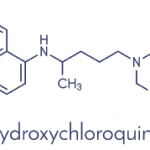 The Impact of RA Disease Activity on Frailty
The Impact of RA Disease Activity on Frailty
By Hannah Brubeck, BS, Courtney Loecker, PhD MSN, & Katherine Wysham, MD
Why was this study done? Patients with rheumatoid arthritis (RA) experience frailty earlier and more frequently than the general population. Secondary frailty, in which frailty is driven by an uncontrolled underlying condition, has been demonstrated in other disease states but has yet to be explored in RA. There is an established cross-sectional relationship between RA disease activity and frailty, but it is unclear whether this relationship persists longitudinally or provides evidence for secondary frailty. We evaluated the association of disease activity with frailty in a longitudinal RA cohort.
What were the study methods? Participants were veterans who were enrolled in the RA, Frailty and Osteoporosis (FROst) Repository in the VA Puget Sound Health Care System. The study outcome was phenotypic frailty, which measures exhaustion, weight loss, physical activity, walk speed and grip strength. We used ordinal logistic regression models to assess the cross-sectional relationship between RA disease activity (DAS28-CRP) and frailty. We used paired T-tests and mixed ordinal regression models to assess the longitudinal relationship between changes in disease activity and frailty over one year.
What were the key findings? Higher disease activity was cross-sectionally associated with higher frailty category at baseline (OR 1.98, P<0.0001). This finding was independent of important covariates, including age, RA duration and medication use. Nearly one-third of veterans had higher frailty scores after one year, and higher disease activity was independently associated with worsened frailty over time (OR 3.31, P<0.0001).
What were the main conclusions? Increasing RA disease activity is associated with frailty both cross-sectionally and longitudinally. This suggests that active RA disease may influence frailty measurement, potentially confounding frailty assessment, as well as contribute to frailty over time through cumulative inflammation and damage. Taken together, these findings support the concept of secondary frailty.
What are the implications for patients and clinicians? Clinicians should consider that active RA disease may confound frailty ascertainment and should be taken into consideration if frailty is being used to inform treatment decisions. Frailty measurement, therefore, should ideally be performed when RA disease is optimized. Our findings also support the ACR/EULAR recommended treat-to-target goals of low disease activity or remission, which may help mitigate or prevent frailty onset.
The study: Brubeck HF, Riggles KE, Bass RS, et al. Evaluating the longitudinal association of rheumatoid arthritis disease activity with phenotypic frailty: Evidence for secondary frailty? Arthritis Care Res (Hoboken). 2025 Jul 23. Epub ahead of print.
Hydroxychloroquine Can Protect Kidney Function in Lupus Nephritis
By Shivani Garg, MD, PhD
Why was this study done? Hydroxychloroquine (HCQ) is the cornerstone in lupus management; however, its specific impact on long-term kidney outcomes in lupus nephritis has not been well quantified in real-world settings. With the great debate around HCQ dosing and concerns for safety in patients with kidney disease, lower adoption of HCQ or delays in starting HCQ in lupus nephritis have been noted.
What were the study methods? This study leverages data from longitudinal inception and prevalent lupus nephritis cohorts with up to 20 years of follow-up data. This study uses robust statistical modeling with time-varying Cox proportional hazard modeling and linear mixed effects modeling using random slope and intercept to shed new evidence on the timing of HCQ’s initiation and the impact of early use of HCQ in preventing kidney function decline in lupus nephritis to ensure early and universal use of HCQ in patients with lupus nephritis.
What were the key findings? HCQ use was independently associated with a significantly lower risk of sustained eGFR decline in lupus nephritis. The magnitude of benefit was notable: time-varying HCQ use had a 61–73% lower risk of kidney function decline. Additionally, we are the first to show a significant reduction in kidney function slope decline with HCQ use, which was a striking finding. Our study highlights a 5.12 mL/min/1.73m² per year slower eGFR decline in HCQ users within the first five years of lupus nephritis diagnosis, compared with HCQ non-users.
What were the main conclusions? These findings reinforce HCQ’s protective role in lupus nephritis and encourage care teams and patients with lupus nephritis to feel confident in decisions to start HCQ early as part of their initial therapy and continue HCQ during the disease course.
What are the implications for patients and clinicians? This study offers firsthand, real-world evidence to support patients and clinicians in shared decision making to start HCQ as part of initial therapy in all patients with lupus nephritis by: 1) highlighting the benefits of HCQ with regard to the preservation of kidney function; 2) showing that early use of HCQ is associated with slower kidney function slope decline; and 3) demonstrating the lower risk of kidney function decline (30% or 40%) over time, thereby potentially reducing kidney failure chances and improving survival.
Future studies should explore optimal HCQ dosing strategies that balance efficacy and safety, particularly in patients with chronic kidney disease, given that 65% of HCQ is cleared by the kidneys.
The study: Garg S, Rovin B, Astor BC, et al. Hydroxychloroquine associated with lower glomerular filtration rate decline in lupus nephritis. Arthritis Care Res (Hoboken). 2025 Jul 20. Epub ahead of print.
Referrals to PT for Managing Knee OA
By Samannaaz S. Khoja, PT, PhD, Joel M. Stevans, DC, PhD, Gustavo J. Almeida, PT, PhD, Clair Smith, MS, & Janet K. Freburger, PT, PhD
Why was this study done? Physical therapy (PT) can be an impactful and cost-effective intervention during the early management of knee osteoarthritis (OA) and has been linked to better patient outcomes, lower opioid use and lower healthcare costs. Initial care of knee OA is largely driven by physicians, with patients mostly seeking PT through physician referrals. This study aimed to describe the frequency and timing of physician referrals to PT, and the frequency of other knee OA treatments prescribed over 12 months in patients with a recent knee OA diagnosis. We also examined patient, practice and physician factors associated with early PT referrals.
What were the study methods? This retrospective study used electronic medical records (EMR) from an integrated healthcare system. Visits for new onset of knee OA symptoms were identified using ICD-10 codes. Early PT referral was defined as a referral by the same physician within 15 days of the initial knee OA-related visit. EMR data included PT referrals, knee OA treatments, patient, physician and practice characteristics. We used a public dataset to obtain counts of licensed PTs within the counties where practices were located. We used generalized linear mixed models to examine factors associated with early PT referrals.
What were the key findings? In patients with recent onset knee OA, 26% received at least one PT referral within 12 months, but only 17% received an early PT referral (within 15 days). Oral pain medications and therapeutic injections were among the most frequently prescribed treatments, while lifestyle counseling was among the least. Early PT referrals were less likely in those with higher or missing knee pain scores and those seen in rural practices, and more likely in women, patients with higher BMI and in counties with a greater number of PTs.
What were the main conclusions? Physician referrals to PT for early management of knee OA are infrequent and may be influenced by patient and practice factors.
What are the implications for patients and clinicians? Non-pharmacological knee OA approaches are underused, despite being recommended as frontline treatment in clinical practice guidelines. This study underscores the need to improve the access and delivery of PT and lifestyle interventions for knee OA.
The study: Khoja SS, Stevans JM, Almeida GJ, et al. Physician referral patterns to physical therapists for managing knee osteoarthritis: A retrospective analysis of electronic health records from an integrated health system. Arthritis Care Res (Hoboken). 2025 Aug 18. Epub ahead of print.


